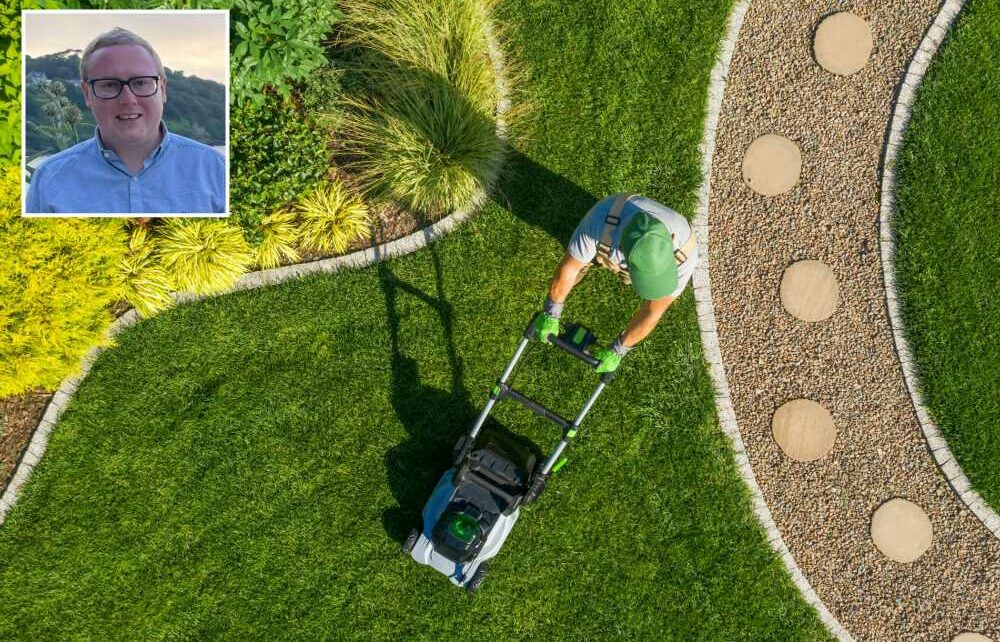WITH the weather heating up, it's likely you'll soon be spending more and more time in your garden.
But if you're totally clueless when it comes to caring for your lawn, then look no further…because gardening expert Jamie Shipley has shared his top advice on the best ways to take care of your grass over the summer.


Speaking exclusively to Fabulous Digital, he says: “When summer arrives, it can be challenging to predict how your grass will behave, particularly if the weather has been harsh and you're unaware of the amount of beneficial minerals in your soil.
"You'll see your grass flourish all summer long if you know the appropriate tips and tricks for maintaining it.”
1. Mow your lawn regularly
The gardening guru begins by explaining that a freshly mowed lawn will help to promote new strong growth and healthy-looking grass.
"Make sure your mower blades are kept sharp because dull blades will rip your grass out from the ground which could lead to browning, withering or infection," he warns.
"Blades should be sharpened once or twice a year – you can take your mower to your local DIY store for this."
Jamie, who is managing director of Hedges Direct, adds that your mower should be on a setting that'll cut around 25% of growth, and leaves around three centimetres of grass length.
FABULOUS BINGO: Get a £20 bonus & 30 free spins when you spend £10 today
"If your lawn is cut too short, there's less leaf area to take in oxygen and sunlight, slowing root development, and the blade could also damage the crowns of the grass plants," he points out.
"This would weaken the lawn, increasing the threat from weeds, insects, and disease.
"Even if you avoid physical damage, short grass provides little shade, exposing your lawn to damaging summer heat or frost in winter."
The gardening whizz goes on to say that grass grows at different rates throughout the year – adding that in spring you should ideally mow your lawn weekly, while in summer it should be once or twice a week.
However, he warns to be careful not to over-cut the grass because too much trimming when dry can "cause damage," making it more susceptible to disease.
2. Water your lawn often
Although it sounds simple, Jamie says the key ingredient to a healthy lawn is water.
"It won’t survive without it," he explains.
"For gardeners living in the UK, you have the benefit of pretty regular rainfall, so you don’t have to worry too much about watering your lawn during autumn and winter; it'll probably be able to retain moisture naturally from the soil."
But the gardening guru goes on to say that during dry spells in the warm summer months, your grass will need a good soak with around an inch of water once a week for optimal growth.
"Any more than this, and the grassroots may not go further down into the soil looking for water, resulting in a shallow-rooted, weak lawn," he points out.
3. Avoid walking on the grass
The gardening whizz says that although it isn’t always possible – especially when you have kids and pets – you should try to stay off your lawn so that it stays in perfect condition.
"Walking on your grass can cause it to compact, especially in wet weather," he explains.
"This can result in water-logging.
Unfortunately, not all lawn weeds are equal, some will be annual weeds which are best hand-pulled as they are normally shallowly rooted
"As a result, grass plants may not be getting the essential nutrients and air, resulting in a dry or wilted lawn."
4. Aerate your lawn
Jamie explains that this simple process can rescue your lawn if it’s been suffering from compacted soil, as it improves drainage and the flow of nutrients, air, and water.
"In order to aerate your lawn, spike it with a garden fork as deep as possible, targeting particularly compact areas," he advises.
"To prevent weeds from growing in the temporary holes, you can use sand to fill these."
The gardening pro goes on to share several signs that indicate your soil is compacted and may need aerating.
These include hard soil, a thinning, wilting or brown lawn, or a layer or pools of water on the top of your lawn.
Jamie continues: "This process is best done in spring, giving your grass time to recover before the growing season starts.
"You should avoid aerating during the peak of summer or winter, as this may cause damage to your lawn when it’s at its most vulnerable."
5. Remove weeds
According to Jamie, it’s best to weed your lawn before feeding it otherwise you’ll be encouraging weeds to grow.
"Unfortunately, not all lawn weeds are equal, some will be annual weeds which are best hand-pulled as they are normally shallowly rooted," he says.
"Perennial weeds such as dandelions can either be hand-weeded or use a spot-weed eradicator but be sure to be precise and spray the weed foliage only or else you’ll end up killing the surrounding grass."
6. Fertilise your lawn
Jamie explains that in order to encourage growth and maintain a good condition, you should feed your lawn around four times a year.
"Doing this regularly will also prevent disease, weeds, and pests," he says.
Most soils in the UK are neutral, with a pH of 7," he explains. You can raise the pH of acidic soil by adding lime, but often it's better to choose acidic loving plants rather than trying to change soil on a large scale
"Check your fertiliser instructions and make a note of how long it lasts in order to ensure the right amount of time between feeds.
"On average, slow-release fertilisers are effective for six to eight weeks, while fast-release products can be applied every four."
He goes on to explain thatspring is a great time to feed your lawn because it'll help it recover after winter and provide all the nutrients needed during the growing season for thick, dense grass.
Steps to fertilise your lawn
Prepare your lawn – "Make sure you've mowed, aerated, and removed any weeds or leaves from your lawn before fertilising," Jamie explains.
"If your grass appears dry, you may also want to water it the night before fertilising to help the lawn to absorb the nutrients."
Applying the fertiliser – The gardening whizz says that a spreader will help you to apply the right amount of fertiliser evenly.
"Or, if you have a liquid fertiliser, it can be sprayed onto your grass," he notes.
"This is particularly good for patches of grass that need attention."
Watering your lawn – "Watering your grass lightly with a hose after the application will help the fertiliser absorb into the soil," he points out.
"Or, you could try and time your fertilisation just before rainfall."
Begin the cycle again.
7. Check PH levels of soil
Jamie explains that you can find out the PH of your soil with a PH soil test kit which is widely available online or in garden centres.
Alternatively, he says you can look around your garden and the local area at what plants are growing well and you'll get a good indication of your soil type.
"Most soils in the UK are neutral, with a pH of 7," he explains.
"You can raise the pH of acidic soil by adding lime, but often it is better to choose acidic loving plants rather than trying to change soil on a large scale.
"You could also grow some plants in containers if the ground soil conditions aren’t suitable."
WIN A HOLIDAY TO MEXICO FOR TWO WORTH UP TO £6K!

Fancy winning a dream holiday to Mexico for you and a partner, worth £6,000?
Fabulous has teamed up with the five-star Hard Rock Hotel Riviera Maya to give you the chance to win a seven-night, all-inclusive holiday for two, with return flights courtesy of Thomas Cook.
All you need to do to enter is vote for your favourite hair, make-up and skincare products in the Fabulous Beauty Awards 2023.
Plus, there is £17,000 worth of beauty goodies up for grabs! Click here to vote.
Source: Read Full Article


